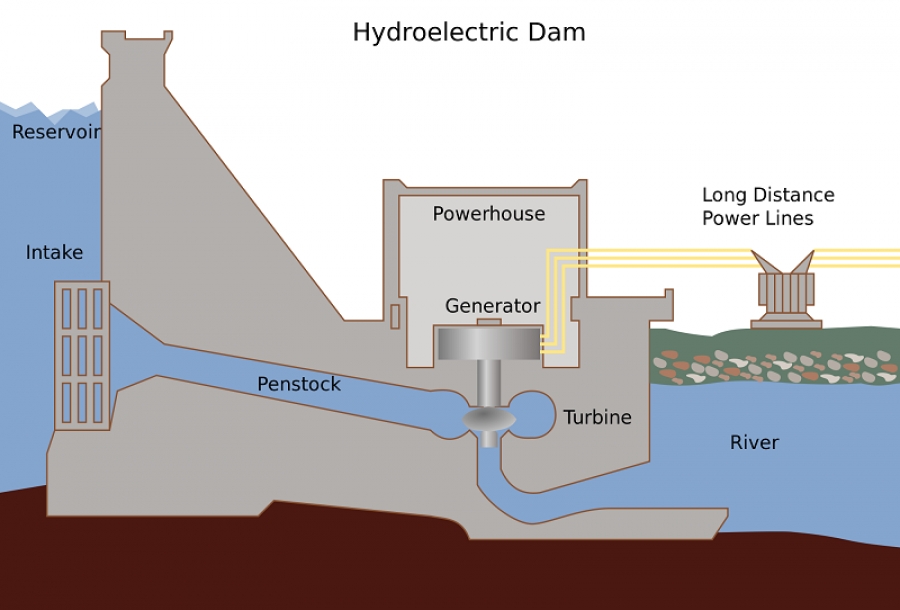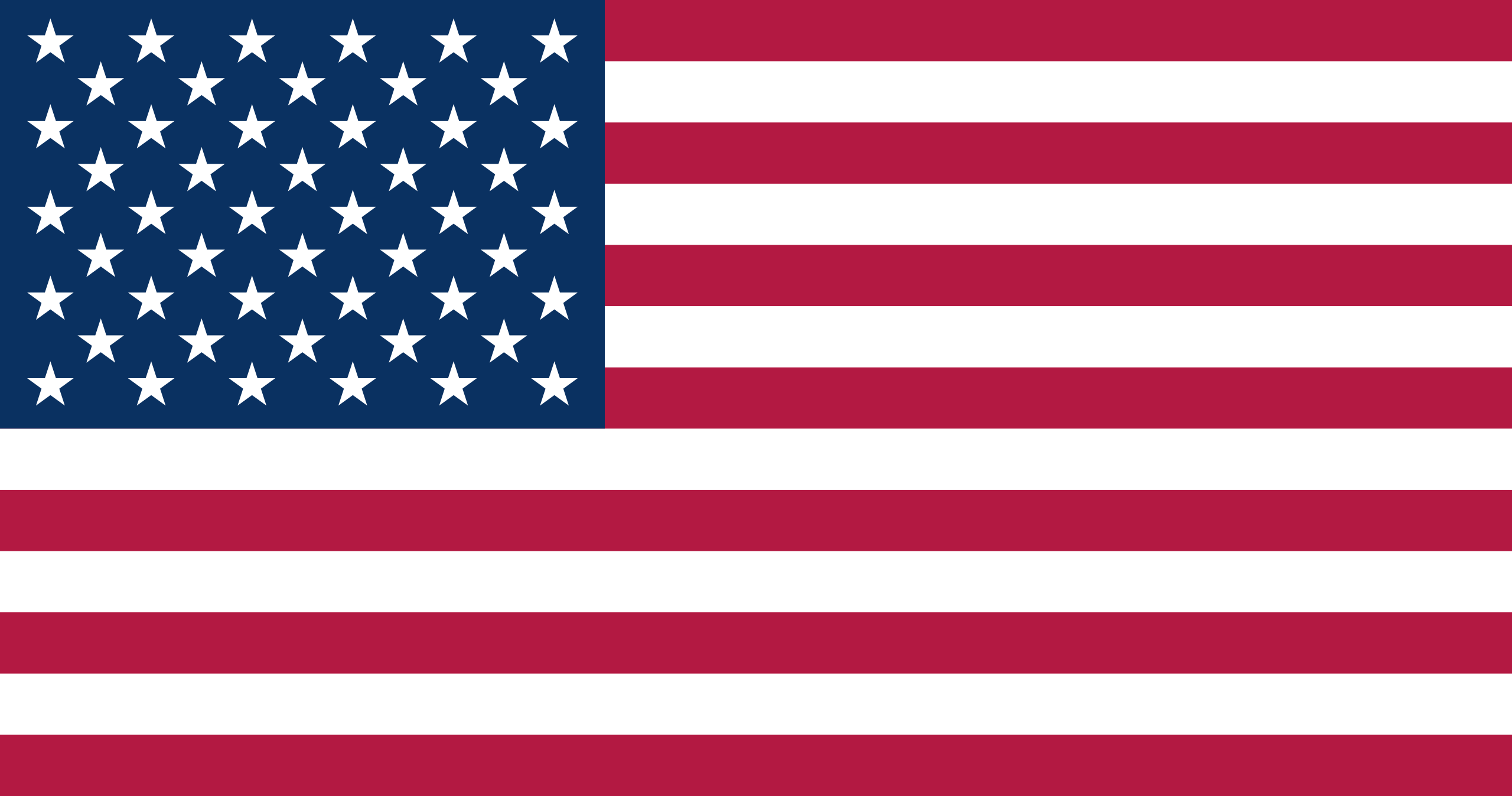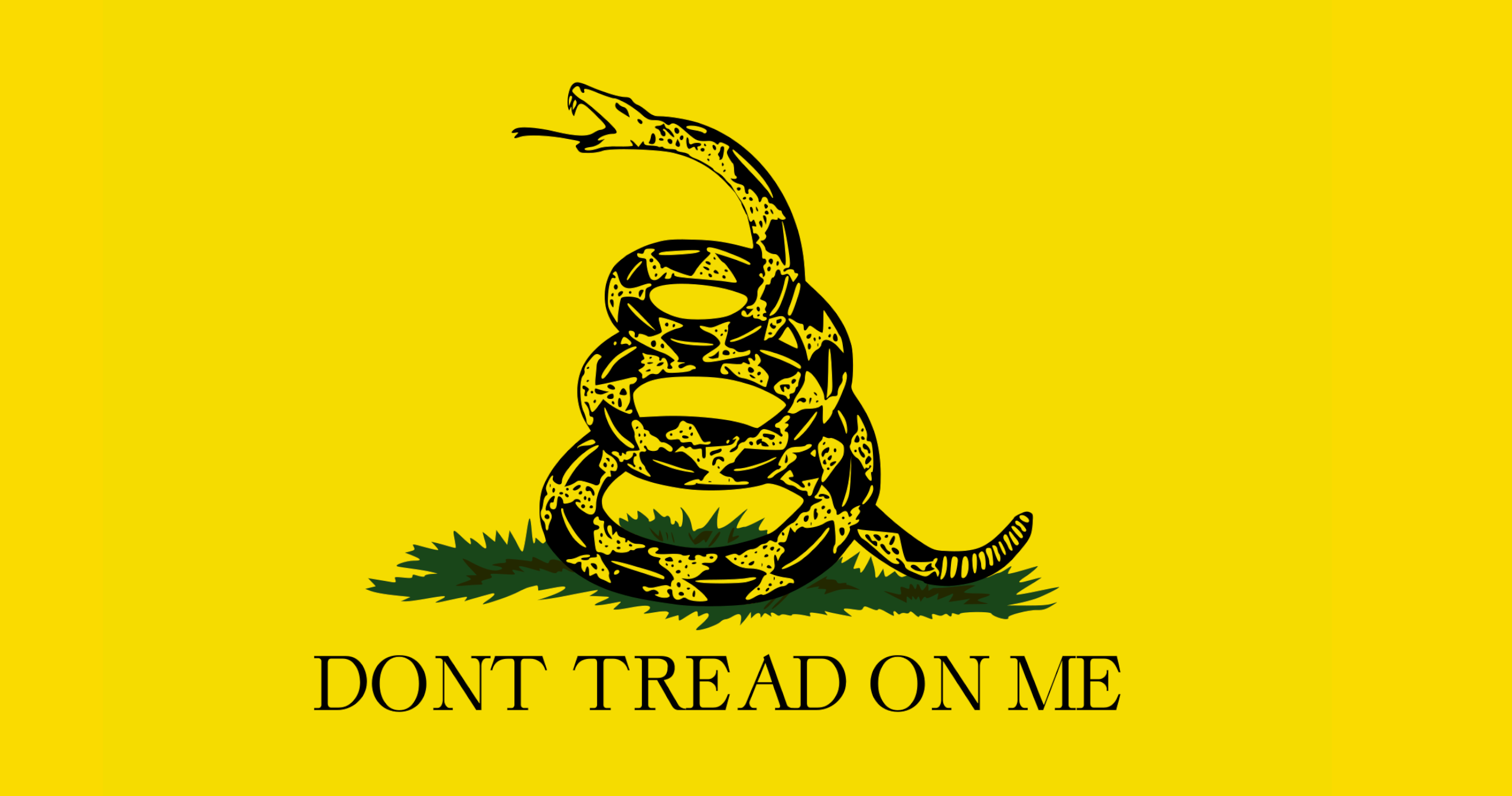*395 *396 Robert J. Sugarman, Bernard A. Ryan, Jr., Harrisburg, Pa., for plaintiffs.
John Hall, Asst. U. S. Atty., Harrisburg, Pa., Frank Leber, U. S. Dept. of Agriculture, Harrisburg, Pa., for defendants.
OPINION
MUIR, District Judge.
Introduction.
This case involves alleged violations of the National Environmental Policy Act, 42 U.S.C.A. § 4321 et seq., and the Watershed Protection Act, 16 U.S.C. § 1001 et seq. The Plaintiffs are owners of property in the vicinity of the Buck Hill Creek in the Pocono Mountains region of northeastern Pennsylvania. The stream is a tributary of the Brodhead, one of the most famous trout streams in the Eastern United States. The Defendants, officials of the U. S. Department of Labor, propose to construct a dam across the stream in the proximity of the Plaintiffs' homes.
On December 10, 1974, the Plaintiffs filed a complaint requesting declaratory and injunctive relief and a motion for a preliminary injunction. Expedited action was requested on the preliminary injunction as a construction contract was to be let for the dam on December 23, 1974. The award date was subsequently changed to January 3, 1975. A hearing commenced in Williamsport, Pennsylvania on December 23, 1974 and concluded on December 30, 1974. On the first *397 day of the hearing, the parties agreed that the hearing on final injunction be consolidated with the hearing on the preliminary injunction. Because of the exigent circumstances of the case it was necessary to issue an order unaccompanied by findings of fact and conclusions of law. An order embodying a declaratory judgment and an injunction was issued by the Court on December 31, 1974 with respect to the National Environmental Protection Act issue. Findings of fact and conclusions of law are lengthy, are filed separately and incorporated herein by reference.
1. Scope of Reviewability of the Agency's Action with Respect to the National Environmental Policy Act.
The National Environmental Policy Act requires that federal agencies engaged in "planning and in decision making which may have an impact on man's environment . . . utilize a systematic, interdisciplinary approach . . .." 42 U.S.C. § 4332(2) (A). The Act also requires that "a detailed statement" be prepared where "major Federal actions significantly affecting the quality of the human environment" are to be undertaken. 42 U.S.C. § 4332(2) (C). The Act specifically provides what the statement is to contain. For example, the document which has become known as an environmental impact statement must discuss the "environmental impact of the proposed action, . . . any adverse environmental effects which cannot be avoided should the proposal be implemented . . ." and, "alternatives to the proposed action." 42 U.S.C. § 4332(2) (C) (i), (ii), and (iii), respectively.
The Court in this case is not called upon to consider the question of standing. Defendants agree that the Plaintiffs have standing to challenge the action of the Soil Conservation Service and Defendants also agree that the agency's actions are reviewable. The question presented in this case is to what extent should the Court review the determination of the Soil Conservation Service that it need not file an environmental impact statement, that it need not seek reapproval from Congress for the contested dam, and that the benefits of the dam exceed the costs. The extent to which a Court should question the actions of a federal agency is set forth by the Administrative Procedure Act, (A.P.A.), 5 U.S.C. § 706.
The A.P.A. states that "The reviewing court shall(1) compel agency action unlawfully withheld or unreasonably delayed; and (2) hold unlawful and set aside agency action, findings, and conclusions found to be
(A) arbitrary, capricious, an abuse of discretion, or otherwise not in accordance with law;
* * * * * *
(C) in excess of statutory jurisdiction, authority, or limitations, or short of statutory rights;
(D) without observance of procedure required by law;" . . . .
The most authoritative explanation of the Administrative Procedure Act is found in Citizens to Preserve Overton Park v. Volpe, 401 U.S. 402, 415-417, 91 S. Ct. 814, 28 L. Ed. 136 (1970). The Defendants believe that agency action should only be set aside where it is found to be arbitrary and capricious. The clear import of the language of the statute and the Supreme Court case cited is that the Defendants proposed "arbitrary" and "capricious" standard is incorrect. The words "arbitrary" and "capricious" impose a minimum standard of review where there is no other standard to apply. Under Volpe, this Court is first to determine the administrator's duties, responsibilities, and whether he has carried them out. Only after that examination is made, in cases where there is no other standard to apply, should the Court then scan the agency action for evidence of arbitrary or capricious conduct. Citizens to Preserve Overton Park v. Volpe, supra. The commands of the National Environmental Policy Act are clear. The statute requires that the environmental study be *398 done. N.E.P.A. does not direct that environmental statements are to be prepared when in the opinion of the administrator there may be a significant effect on the human environment. If an agency decides not to undertake an environmental study, it takes the risk that its decision will be overturned where a Plaintiff proves that the federal action will have a significant effect on the environment.
The Court is aware of authority in the Second Circuit holding that an agency decision not to file an environmental impact statement should be overturned only if it is arbitrary and capricious. Hanly v. Kleindienst, 471 F.2d 823 (2d Cir. 1972), cert. denied 412 U.S. 908, 93 S. Ct. 2290, 36 L. Ed. 2d 974 (1972). We think the better view is set forth in Judge Friendly's dissent in that case and in Wyoming Outdoor Coordinating Council v. Butz, 484 F.2d 1244 (10th Cir. 1973) and Minnesota Public Interest Research Group v. Butz, 498 F.2d 1314 (8th Cir. 1974). See Save Our Ten Acres v. Kreger, 472 F.2d 463 (5th Cir. 1973) and Environmental Defense Fund Inc. v. Corps of Engineers, 492 F.2d 1123 (5th Cir. 1974).
2. The Merits of the National Environmental Policy Act Issue.
The parties are agreed that the $2,000,000 dam to be constructed on the Buck Hill Falls Creek is a major federal action. After hearing all the testimony in this case, including numerous expert witnesses and the administrator who decided that an environmental impact statement was unnecessary, the Court reaches the conclusion that the National Environmental Policy Act was violated. As the findings of fact fully set forth, the record of the Soil Conservation Service which led to the negative impact statement did not justify the conclusion that the dam sought to be constructed would not significantly affect the quality of the human environment. Not only is there a likelihood that the environmental effects from the project on the local environment will be significant but the Soil Conservation Service did not even do the work necessary to reach a justifiably contrary conclusion. An accumulation of paper work is not a substitute for legitimate scientific research. Specifically, the environmental assessment of the Soil Conservation Service did not explore in depth all the adverse effects to the aquatic life in the stream that might be caused by the dam. See 42 U.S.C. § 4332(2) (C) (i) and (ii). While the service did consult with the Pennsylvania Fish Commission and attempt to devise an apparatus for allowing a portion of the water to escape impoundment, there is still a question as to whether the brook trout in Buck Hill Creek can survive the project. The service maintains that the only way it will ever know if the so-called "cold water bypass" will operate to allow trout naturally present in the stream to live with the presence of the dam is to build the dam and see if it works. The people of the Buck Hill Falls region and the public at large deserve better planning than that. See 42 U.S.C. § 4332(2) (C) (iii).
The long-term effect on man's larger environment which may be caused by the construction of the challenged dam has not been adequately considered. There are woefully few trout streams on the East Coast of the United States where the natural habitat of the fish has been preserved. In many ways, the diminishing resources of our country command the attention and interest of our city dwelling population even more than those present in the immediate area of the project. Just as rural residents depend upon the city, urban dwellers seek and even require the beauty of the countryside.
While the controversy over the Buck Hill Falls dam has not been great, the present opposition is meaningful. Plaintiffs in this case have a very real controversy with the Soil Conservation Service over the construction of the Buck Hill Falls dam. The Plaintiffs stand to lose a substantial monetary and esthetic investment if the trout fishing on the stream is eliminated by the construction *399 of the dam. The issues raised and proven by the Plaintiffs are ample to support the finding that the law has been violated, irrespective of the prior low level of opposition to the project.
It is unnecessary for the Court to delve into the requirements of the Council on Environmental Quality, an organization created by the National Environmental Policy Act, or regulations promulgated pursuant thereto because of the violation of the clear statutory language.
The Court is not persuaded that because the Buck Hill Falls dam is only one portion of a three-dam project, the importance of an environmental impact study is lessened.
3. Review of the Agency's Action with Respect to the Watershed Protection Act.
The Watershed Protection Act provides in relevant part that "No appropriation shall be made for any plan involving an estimated Federal contribution to construction costs in excess of $250,000 . . . unless such plan has been approved by . . ." the appropriate committees of Congress. 16 U.S. C. § 1002. The Act also authorizes the Secretary of Agriculture, upon approval by the local sponsoring agencies, "to make allocations of costs to the various purposes [of the project] to show the basis of such allocations and to determine whether benefits exceed costs;" 16 U.S. C. § 1003. Both statutes have given rise to a potpourri of regulations governing the administrative agencies.
The standards of reviewability of the agency's action with respect to the Watershed Protection Act are different from those under the National Environmental Policy Act. The former statute provides that the secretary "is authorized" to assemble a benefitscosts analysis of a project falling under the jurisdiction of the Act. The "is authorized" phrase suggests that the Secretary might not be required to do the analysis but in this case it was done, and it is the Court's responsibility to see that the law is complied with.
4. The Merits of the Watershed Protection Act Issue.
A. The Benefits-Costs Ratio. The testimony at the hearing revealed that the benefits to costs ratio of the dam is, according to the government's own computations, at best sesquivigesimal. This 1.05 to 1 margin is exceptionally close. Each dam in a multi-dam project must be separately justifiable. Chapter 1, Paragraph I(c) of the Economic Guide for Watershed Protection and Flood Prevention requires that a separate benefitscosts evaluation be done for each member of a project.
The benefits to costs ratio is challengable insofar as it utilizes an outmoded discount rate of 3.25%. The Government takes the position that use of a 3.25% interest factor is authorized by the Water Resources Act, Public Law No. 93-251, § 80(b) (3/7/74, 88 Stat. 34). This is not correct. 3.25% interest with respect to costs may be used only if there were assurance of nonfederal funds by December 31, 1969. The assurance here did not come until 1971, at the earliest. Use of this low and inaccurate interest rate is itself enough to bring the benefits to costs ratio below 1:1.
B. The Resubmission Issue. Though the project of which the Buck Hill dam is a part was originally approved by the appropriate congressional committee some years ago, the Plaintiffs contend that the resubmission to Congress of the plans of the last remaining dam is nevertheless required. The Plaintiffs point out that (1) the Soil Conservation Service has eliminated one dam from the earlier plans for the project, (2) the "recreation" purpose of the project was dropped leaving only the "flood control" purpose, and, (3) there has been a substantial increase in the cost for the last remaining dam. Although a cogent argument is made by the Plaintiffs on this issue by virtue of substantial changes in the project, the resubmission issue need *400 not be reached in view of the findings already made with respect to the Defendants' violation of the Watershed Protection Act.
An order in conformance with this Opinion has been issued.
FINDINGS OF FACT AND CONCLUSIONS OF LAW
The Court makes 171 Findings and Fact and 35 Conclusions of Law in Paragraphs separately numbered as set forth below:
Paragraphs
Interested Parties 1.01-1.14
The Area 2.01-2.07
1955 Flood 3.01-3.02
Watershed Plan 4.01-4.18
Proposed Dam 5.01-5.34
Other Dams 6.01-6.09
Trout and Trout Stream 7.01-7.25
Pa. Fish Commission 8.01-8.11
Alternatives 9.01-9.04
Benefits to Costs Ratio 10.01-10.13
Effects of Dam 11.01-11.14
The Negative Declaration 12.01-12.12
Environmental Impact 13.01-13.07
Statement
Conclusions of Law 14.01-14.35
Interested Parties.
1.01 Plaintiffs are Concerned Residents of Buck Hill Falls, an unincorporated association formed to protect the environment of the area, especially from the dam which is the subject of this suit, appearing by its chairman and trustee ad litem, Edwin Gee, Greenville, Delaware 19807; Edwin Gee, individually; John Baker, 111 Park Avenue, New York, New York; James J. Wilson, Middleburg, Virginia 22117; and John R. Miller, 18 Wellington Road, Garden City, New York 11530. All individual plaintiffs own property and summer or permanent residences in the immediate area of the proposed dam.
1.02 Defendants are Kenneth Grant, Department of Agriculture, Washington, D. C., Administrator of the Soil Conservation Service of the Department of Agriculture ("SCS"), Earl Butz, Secretary, U. S. Department of Agriculture, Washington, D. C., and Benny Martin, Federal Building, Harrisburg, Pennsylvania, State Conservationist for Pennsylvania of SCS. References to these defendants include their respective predecessors.
1.03 Plaintiffs sue on their own behalf and on behalf of a class consisting of all residents and visitors of the Buck Hill Falls area and others who use and enjoy the scenic and aquatic resources of the Brodhead Creek area of Monroe County, Pennsylvania. Defendants have acted on a basis generally applicable to the class, the common questions of the law and fact predominate over individual issues, and efficiency, fairness and the public interest will benefit from a single determination of the issues in dispute between the members of the class and defendants.
1.04 The Plaintiff Gee is a Commissioner of the National Water Study Commission and a member of the Board of Buck Hill Falls Inn, a corporation whose stock is publicly traded.
1.05 The Plaintiff Gee has a summer residence in the area.
1.06 The Gee family spends summers and parts of the winters at Buck Hill Falls.
1.07 The Plaintiff Gee spends 35% of his time at Buck Hill Falls and intends ultimately to retire there.
1.08 The Buck Hill Falls Company operates the Buck Hill Falls Inn.
1.09 Some of the Plaintiffs are permanent residents of the area.
1.10 Samuel R. Slaymaker, an authority on fly fishing, has written between 50 and 60 articles and several books on outdoor sports including fly fishing and hunting, and lectures on outdoor sports between 12 and 20 times per year.
1.11 Slaymaker was the founding Secretary of Trout Unlimited in Pennsylvania.
1.12 The Soil Conservation Service has 255 full time employees in Pennsylvania and 50 to 60 part time employees within the state.
*401 1.13 The Monroe County Commissioners support the project which is the subject of this suit.
1.14 The Commissioners of Monroe County were not aware of any opposition to the dam, other than as reflected in a vote described in ¶ 4.12, except by way of a letter from the Plaintiffs in August, 1974.
The Area.
2.01 The area in which the dam is proposed to be located is the Pocono Mountains resort area, known throughout Pennsylvania and the Northeastern United States as a uniquely accessible region of great natural beauty, famous fishing streams, and desirable vacation and resort location. As owner of the Inn and the stream, Buck Hill Falls Company stocks the stream and assures access to all the public who use the Inn. Buck Hill Falls Inn has an occupancy rate of 80,000 guest-days per year.
2.02 Plaintiffs, among many other citizens of nearby communities and states, have purchased properties for vacation use for the purpose of securing for their families and themselves full access to and enjoyment of the benefits of peaceful and natural surroundings and one of the most famous trout fishing streams in the Eastern United States.
2.03 Buck Hill Falls Company owns 6500 acres including the site of the proposed dam.
2.04 Five or six of the 100 people who met to discuss the proposed dam had single permanent residences in the area.
2.05 There are 200 residences in the area.
2.06 The Buck Hill Creek is a tributary of the Brodhead.
2.07 There are in excess of 20 miles of trout streams in the watershed.
1955 Flood.
3.01 The impetus for the project arose from the flood of 1955. An application for assistance under Public Law 566 was made and transmitted to the Governor of Pennsylvania in July, 1958, by the County Commissioners and the Soil and Water Conservation Districts of Pike and Monroe Counties (local sponsors). The application was approved by the Governor in November, 1958. In April, 1959, the project was authorized for planning by the Secretary of Agriculture.
3.02 In the August, 1955 flood, 99 lives were lost on the Brodhead Creek and its tributaries and 42 bridges were washed out.
Watershed Plan.
4.01 The total watershed comprises 18,600 acres.
4.02 The project as viewed by Soil Conservation officials involves not merely this dam alone, but the 18,600 acres and the original four dams reduced in 1971 to 3.
4.03 The primary purpose of the project is to reduce the problem in the watershed arising from flood water damage.
4.04 Preliminary investigation on this project started in 1958.
4.05 The watershed work plan included conservation land treatment for sediment producing areas and provided for three flood water detention structures and one multiple purpose flood detention-recreation structure.
4.06 Originally, the watershed work plan provided for four dams. Two dams are now either completed or nearing completion. One dam (PA-465) was deleted and recreational use of another was also deleted in October, 1971.
4.07 With the completion of construction of Dam PA-466, the watershed project will be completed and turned over to the local sponsors for operation and maintenance.
4.08 In 1961, Congressional committees in both the House and the Senate authorized this project.
4.09 Detailed final design of a project was not started until after congressional approval.
4.10 The project has been significantly changed since it was authorized by the *402 Agricultural Committee of the House of Representatives in 1961 in that
(a) one related structure and recreational use of another have been deleted,
(b) major and expensive erosion-retardant measures have been added, and
(c) costs of the proposed dam have increased, partly because of the above-mentioned measures, from $425,000 to $2,000,000.
4.11 The plan with the 1971 supplement was not resubmitted to the Congressional committees.
4.12 In November, 1967, by a vote of approximately 2700 to 2600, residents of Monroe County, Pennsylvania, voted in favor of a bond issue of $250,000 to provide the commissioners of that county with money towards land acquisition for dams to be constructed on the Brodhead Stream.
4.13 The first structure in the project was contracted for in 1972 and the second structure in 1973.
4.14 A supplement to the work plan on the original four dam project was issued in 1971 which eliminated the third dam, PA-465 (Griscomb Creek Dam) at the request of the sponsors above named and also deleted recreation in one of the other structures.
4.15 On December 24, 1974, after the institution of this suit on December 10, 1974, and on the second day of the hearing before this Court, the Defendant Grant wrote a letter to the respective congressional committees notifying them of this particular project.
4.16 The letter from the Defendant Grant dated December 24, 1974 was the first notification to the congressional committees since 1961 and prior to December 24, 1974 the congressional committees had received no advice of the deletion of the one dam and the deletion of recreation as a purpose with respect to the project.
4.17 Overall, 208 acres would be cleared in the construction of the three dams.
4.18 Overall, the three dams which make up this project presently will destroy 3200 feet of trout stream.
Proposed Dam.
5.01 Acting under the purported authority of P.L. 566, 83rd Congress, 16 U.S.C. § 1001 et seq., and a 1961 authorization issued by the Agriculture Committees of the Congress, Defendants presently propose to erect a $2 million 90-foot high dam on Buck Hill Creek, PA-466, just north of state Route 191 near Buck Hill Falls in Monroe County, Pennsylvania, as the third structural phase of a larger project known as the Brodhead Creek project. The two dams already under construction will have some utility without the proposed dam, PA-466.
5.02 The proposed dam is approximately 25 miles from Stroudsburg.
5.03 The plan for the construction of this dam was originally formulated in 1961.
5.04 Invitations to bid for the construction of PA-466, the dam under consideration, were given out in May, 1974.
5.05 The bid for this dam was received August 23, 1974.
5.06 The low-bidder for the proposed dam, to whom Defendants plan to award the contract, is Triple-V Construction Co., the same contractor who is building the Goose Pond Run dam. The contract is for $1,934,650.34 and was to have been awarded on or before January 3, 1975.
5.07 Unless restrained by this Court, Defendants would have awarded a construction contract for the project on or before January 3, 1975.
5.08 The useful life for this dam is estimated to be 100 years.
5.09 The dam will be approximately 500 feet wide.
5.10 The dam is designed for maximum probable rainfall.
5.11 The plan provides as follows:
The emergency spillway will be 250 feet wide and constructed in the abutment on the west side of the dam. It *403 will be constructed of compacted earth, rock, steel and concrete. The earth material for construction of the dam will come from the excavation of the emergency spillway and a borrow area on the west abutment extending upstream from the dam. Seventy-six acres will be cleared for the construction of the dam, emergency spillway, a 7.7 acre permanent pool and the borrow area.
5.12 The permanent pool of the proposed dam would normally be 25 feet deep for the permanent 7.7 acre pool; the average depth of the 69.3 acre feet actual constraint would be 9 feet.
5.13 Salient features of the proposed construction are:
A riser which allows the water to escape from the dam when it reaches the top of the riser.
Emergency overflow which prevents topping of the dam during a flood.
A cold water bypass through the base of the riser is designed to reduce the temperature of the stream below the dam.
5.14 The permanent impoundment is 69 acre feet. The spillway impoundment is 1000 acre feet.
5.15 Riprap of 5900 cubic yard of rock will run from a point near the highway even with the dam down to a point where the old stream bed will receive water from the dam.
5.16 At maximum flow, the speed of the water is designed to be reduced by the energy reducer from 30 feet per second to 6 feet per second.
5.17 The energy dissipating device at the dam may release water at the rate of 13 feet per second, a velocity which the downstream vegetation may be unable to constrain.
5.18 The distance between the energy dissipator and the original stream channel is about 150 feet.
5.19 At low flow (2.8 cubic feet of water per second) 2.6 cubic feet per second will go through the cold water bypass and .2 cubic feet per second will go into the impoundment.
5.20 The cold water bypass proposed for this dam is not typical and was designed by the Soil Conservation Service in consultation with the Pennsylvania Fish Commission.
5.21 The cold water bypass is eight inches in diameter.
5.22 Buck Hill Falls Company conveyed an easement of 100 acres for construction of the dam for a nominal consideration.
5.23 The Buck Hill Falls Company opposes a dry dam, preferring a small impoundment.
5.24 The depth of water in the dam at normal level is 25 feet.
5.25 The maximum depth of water in the dam after a heavy rainfall, but not a severe storm, will be 50 to 60 feet.
5.26 Emergency storage during a super storm would be of a 90 foot depth.
5.27 A maximum probable storm will produce 20 inches of runoff in the area.
5.28 Runoff is rainfall less the sum of water stored in the ground and water evaporated.
5.29 The sediment pool portion of the dam will be filled with silt after 50 years.
5.30 After each major storm, the weir and the weir tie-in must be inspected and the latter will probably need maintenance at the time.
5.31 If PA-466 is deleted, the level of protection will be reduced from 72% to 51%.
5.32 Although 77 acres where the dam is to be constructed will be cleared, it will be revegetated and some trees planted.
5.33 The plan provides that the entire area, with the exception of the permanent pool, will be vegetated with grasses and legumes; and that one hundred sixty pine trees will be planted along the edge of the emergency spillway adjacent to Pennsylvania Highway Route 191.
5.34 The Pennsylvania Department of Environmental Resources has issued a permit for the dam.
*404 Other Dams.
6.01 Originally, the Soil Conservation Service proposed to build 27 dams in the Brodhead watershed for flood protection, including the two already built and the dam which is the subject of this action, but state that they have no present intention of building the same.
6.02 Three governmental agencies, the Soil Conservation Service, the Bureau of Reclamation of the Department of the Interior, and the U. S. Army Corps of Engineers, build dams for flood control.
6.03 A dry dam is a dam with a pipe through it, open at all times, and there is no impoundment until the water flow exceeds the capacity of the pipe.
6.04 The Goose Pond Dam has caused serious soil erosion problems despite the Defendants' efforts to prevent such effects, to the point that the Pennsylvania dams authorities warned that it would revoke the permit for its construction unless drastic steps were taken.
6.05 The Goose Pond project was shut down by the State Conservationist because of sediment damage during construction until measures were taken to correct conditions at the dam site.
6.06 The Goose Pond Dam, PA-464, is a dry dam.
6.07 PA-463 is a dry dam.
6.08 PA-465, the dam deleted, affected 80% of the watershed area and its elimination considerably reduced the level of protection.
6.09 The environmental coordinator for the Pine Creek watershed who is employed by the Lycoming County Planning Commission is of the opinion that the Pine Creek Dam had no effect on the control of the flood generated by Hurricane Agnes.
Trout and Trout Stream.
7.01 The Brodhead Stream which is the subject of this litigation and the Beaverkill, Willowemeoc, Nevesink and Eusopus Streams in the Catskills are the most famous trout streams in the Eastern United States and of these, the Brodhead is the most famous.
7.02 Several of the features of the Buck Hill Creek which make it an outstanding trout stream are:
1. It affords natural angling because it has its own fish which survive from year to year and thus needs not be stocked.
2. Good gravel beds provide proper spawning areas.
3. There are no impoundments.
4. Its temperature.
5. Only trout fly fishing is permitted and such angling permits return of fish to the stream.
7.03 Aquatic organisms live in a narrow temperature band, the normal range being between 33 degrees to 68 degrees, and such organisms have a low tolerance to temperature change.
7.04 The weir to be erected upstream will require cleaning at least several times a year.
7.05 Aquatic organisms, including trout, will die if the temperature is beyond their normal limits for several hours.
7.06 Brown trout will die after several hours if the water temperature rises to 73 degrees.
7.07 Brook trout have a tolerance level of 70 to 72 degrees Fahrenheit.
7.08 If the temperature of the water rises beyond the point which the trout can tolerate, there will be no carryover from the summer and no spawning.
7.09 As temperature increases, there is a change in the basic life in the streams, particularly in algae and diatoms.
7.10 The temperature of the water below the dam will probably be at least 71 degrees.
7.11 There has been a steady increase in Pennsylvania of streams restricted solely to fly fishing.
7.12 Over the years, fly fishing for trout has become more popular.
7.13 There has been a gradually decreasing number of trout streams because *405 of sewage, dams and other interferences with the environment.
7.14 There is substantial stocking of trout in the Brodhead because of the number of fishing clubs located on the stream.
7.15 There would be no need to stock the Brodhead if all fish taken were returned to the stream.
7.16 A knowledgeable fisherman will recognize the stocked trout by its coloration, configuration and performance on the line.
7.17 Buck Hill Creek is 25% stocked and 75% unstocked.
7.18 A crowding of game and nongame fish caused by increased temperatures works to the detriment of the game fish and may result in their elimination.
7.19 As the dam silts, the water will become shallower which will result in an increase in the water temperature.
7.20 Trout Unlimited has 20 chapters in Pennsylvania and about 100 members per chapter.
7.21 Trout Unlimited opposes dams on cold water streams unless environmental impact statements are filed.
7.22 All the game fish and all other fish in and below the Pine Creek Dam near Williamsport, Pennsylvania have died except white fish which are commonly referred to as trash fish.
7.23 Silting from the construction of dams has a serious effect on downstream water life.
7.24 1300 feet of high quality habitat for trout will be obliterated by the proposed dam.
7.25 There is a significant possibility that the cold water bypass will not work.
Pennsylvania Fish Commission.
8.01 The Pennsylvania Fish Commission in 1961 characterized Brodhead Creek as probably Pennsylvania's most famous trout stream.
8.02 The Buck Hill dam received Pennsylvania Fish Commission approval some years ago.
8.03 The Pennsylvania Fish Commission has requested that the dam at Buck Hill Creek either be a dry dam, or have a canal around the dam, or a pipe bypassing the dam (as in the presently proposed structure).
8.04 Basically, the Pennsylvania Fish Commission is opposed to dams on trout streams in Pennsylvania.
8.05 There is no policy dispute between the Pennsylvania Fish Commission and Soil Conservation Service.
8.06 The five changes requested by the Pennsylvania Fish Commission in the proposed dam have been complied with.
8.07 Officials of the Pennsylvania Fish Commission do not know whether the proposed cold water bypass will be effective or not.
8.08 The Pennsylvania Fish Commission agreed to approve a bypass at the proposed dam so that the Commission could observe how it will work.
8.09 The Pennsylvania Fish Commission asked that the cold water bypass receive three quarters or the water flow so as to assure proper temperature below the dam when the water from the cold water bypass mixes with the water from the dam.
8.10 The Pennsylvania Fish Commission required the Soil Conservation Service to use a dry dam at the Levet Branch site.
8.11 The Pennsylvania Fish Commission would object to this proposed dam if the project were presented to it at this time.
Alternatives.
9.01 Defendants have considered alternatives to the proposed dam from the point of view of avoiding or minimizing environmental damage.
9.02 The streams above the proposed dam have a very high gradient.
*406 9.03 Defendants have evaluated alternative arrangements, including
(a) alternate locations,
(b) the no build alternative,
(c) stream modification,
(d) flood plan management.
9.04 The Creek has recently been channelized in the area near Canadensis.
Benefits to Costs Ratio.
10.01 In the computation of the benefits to costs ratio, the government used an interest rate of 3.25%.
10.02 $25,000 per acre is the fair market value of land in the vicinity of the proposed dam.
10.03 Over the years, the cost of the dam has increased from less than $500,000 to approximately two million dollars.
10.04 The benefits to costs ratio of this dam as originally computed by the Soil Conservation Service was 1.2 to 1 and for the three dam project 1.9 to 1.
10.05 The data on benefits to costs ratio was originally gathered by the Soil Conservation Service in 1960 and was updated to 1974 by using Bureau of Labor Statistics figures for residential properties and the U. S. Department of Commerce composite construction costs index for commercial properties and buildings.
10.06 The estimated damages were based upon damages estimated in 1955 and updated by using a multiplying factor of 2.05 to date.
10.07 The 2.05 factor for adjustment does not take into account the energy crisis.
10.08 A factor of 2.22 was used for future values based on per capita income from estimates made by the Office of Business Economics and Economics Research Service.
10.09 Per capita income will rise, according to the Government experts, at the same rate for the next 50 years and thereafter will remain constant for another 50 years.
10.10 Benefits from the dam may be allocated as follows:
47.3 percent to roads and bridges
44.3 percent to businesses
8.4 percent to residential properties
_____
100.0 percent
10.11 The benefits to costs ratio ultimately determined by the Defendants was 1.05 to 1 for this dam.
10.12 The 1.05-1 benefits to costs ratio applies to PA-466 dam alone.
10.13 In the opinion of Professor Robert H. Edelstein of the Wharton School, University of Pennsylvania, an economist, the benefits to costs ratio for this dam will be less than 1 to 1.
Effects of Dam.
11.01 The dam will reduce flooding, but will not eliminate it.
11.02 The dam will benefit downstream owners.
11.03 The dam will be clearly visible from the Buck Hill Falls area by its location less than 300 feet from the major highway in this area and immediately adjacent to the major golf course.
11.04 The proposed dam and impoundment may substantially and permanently adversely affect the most heavily fished portion of one of the few stocked, publicly accessible trout streams in the Brodhead Creek watershed which are some of the most significant trout streams in the Eastern United States, by increasing the water temperature because of warming of water in the lake and changing flow patterns. Increased water temperature may prevent trout from living in the stream. The dam may prevent migration, thus affecting spawning and flow of food and fish. Changing flow patterns may affect fish habits. These factors may cause Buck Hill Creek permanently to lose its present character as a cold water trout fishery.
11.05 The proposed dam and impoundment may drastically and permanently adversely affect the natural wildlife habitat.
*407 11.06 The disturbance from construction of the proposed dam may cause serious and long lasting adverse effects to water quality and all living elements in the streams by reason of sedimentation and erosion.
11.07 The proposed project has been opposed by adjacent landowners, sportsmen, and in a referendum on a bond issue relating to local costs of the dam project which included only local voters, by almost half that group of local voters. Inquiries have raised significant questions regarding the effects on aesthetics, fisheries and the economic merits of the projects, none of which have been conclusively determined.
11.08 At least since 1972 Defendants have been aware of the controversy surrounding their dams on trout streams, and the possible serious cumulative effect of such dams on trout fishing in Pennsylvania.
11.09 The proposed dam will destroy paths on both sides of the creek.
11.10 The proposed dam will adversely affect the trout stream because of silting, temperature rise, and damage to aquatic life such as May flies.
11.11 The dam will adversely affect the cold water fishery by
(a) isolation of the trout community,
(b) breaking the major spawning area,
(c) prevention of downstream flow of food organisms,
(d) temperature rise.
11.12 Silting in spawning areas will cause at least a temporary destruction of the spawning areas and fish eggs deposited therein will die because of lack of oxygen.
11.13 Dams on trout streams prevent migration, may adversely affect temperatures of the water and thus create a warm water habitat.
11.14 2.1 acres of wildlife habitat will be destroyed by the dam and 1300 feet of trout stream eliminated.
Negative Declaration.
12.01 The Soil Conservation Service issued a Negative Declaration with respect to Dam PA-466 on November 20, 1974, which was subsequently published in the Federal Register on November 25, 1974.
12.02 There was no analysis by the Government of the aquatic life in the stream prior to the issuance of the Negative Declaration.
12.03 The Government's report which resulted in the Negative Declaration contains no data on water temperature.
12.04 Benny Martin, State Conservationist for Pennsylvania, was the federal official in the Soil Conservation Service who decided to file a Negative Declaration with respect to Dam PA-466.
12.05 The Negative Declaration filed does not indicate with reference to PA-466 alone,
(a) The square miles to be controlled.
(b) The acre feet of sediment storage.
(c) The acre feet of flood water storage.
(d) The percentage of watershed under hydraulic control.
(e) The percentage of reduction of flood damage.
(f) The amount in dollars of the average annual reduction of flood damages.
12.06 The Negative Declaration for PA-466 filed lists no benefits for this dam alone except under the paragraph relating to planned action which states that the dam will provide 931 acre feet of flood storage during a 100 year storm and will have a normal pool of 7.7 acres.
12.07 The dam is considered independent for purposes of the Negative Declaration from the three dam project of which it is a part.
12.08 The State Conservationist decided to file the Negative Declaration about the second week of November, 1974.
12.09 The State Conservationist relied on technical personnel in the soil conservation services with respect to landscaping plans for the proposed dam, including seeding and arboreal work.
12.10 The "Negative Declaration" purported to find that the project will *408 have no significant environmental impact. The Declaration is inadequate in that it does not comply with the requirements for an EIS set out by N.E.P.A.
12.11 Defendants did not distribute the Negative Declaration to all those expressing interest in the project. Copies were not distributed to Trout Unlimited and other organizations which were and are concerned about the environmental effects of Defendants' proposed dams on trout and other fishing streams in Pennsylvania.
12.12 The State Conservationist who issued the Negative Declaration did not secure an opinion of counsel on the need for an environmental impact statement, although it is his practice normally to seek such an opinion on interpretations of departmental regulations.
Environmental Impact Statement.
13.01 Instead of filing an environmental impact statement, Defendants prepared an "environmental assessment", on November 22, 1974, after contract bids were received and opened. In addition to failing to provide the opportunity for comment and public review, the assessment
(a) asserts that proposed mitigating measures will "alleviate" the adverse effects of the project on the trout stream,
(b) fails to mention the concerns shown by Plaintiff Concerned Residents of Buck Hill Falls, Trout Unlimited, and others,
(c) was not prepared in timely fashion to enable its findings to be considered in project reconsideration.
13.02 Defendants may have been motivated in their refusal to prepare an EIS, at least in part, by their desire to take advantage of the present bids.
13.03 On December 19 or December 20, 1974, the U. S. Fish and Wildlife Service requested that an environmental impact statement be prepared by the Soil Conservation Service with respect to the proposed dam.
13.04 There has been no study of the flow conditions at the site of the proposed dam.
13.05 Some of the so-called "work tasks" relating to aquatic habitat listed by the environmental specialist of the Soil and Conservation Service in the "summary of environmental assessment" have not been completed.
13.06 The last studies of aquatic habitat were completed with respect to the waters at the dam site in 1960.
13.07 The normal time span for preparation of the full environmental impact statement is one year.
CONCLUSIONS OF LAW
14.01 This action is brought under the provisions of the Watershed Protection and Flood Prevention Act, P.L. 566, 83rd Congress, 68 Stat. 666, 16 U.S.C. § 1001 et seq., the National Environmental Policy Act of 1969 ("N.E.P.A."), 42 U.S.C. § 4321 et seq., and the Administrative Procedure Act, 5 U.S.C. § 701 et seq.
14.02 This Court has jurisdiction of the cause under the provisions of 28 U.S.C. §§ 1331 (Federal questions), 1361 (Mandamus), and 2201 (Declaratory judgment).
14.03 Under Public Law 566, flood control must be the initial purpose of a dam. Storage of municipal and industrial water and recreation on and around the structures are secondary purposes.
14.04 The matters complained of are not confined to Defendants' exclusive discretion and hence are subject to review by this Court.
14.05 Plaintiffs have standing to maintain this action.
14.06 This action is properly a class action.
14.07 Federal action affecting the environment, if requiring an environmental impact statement, must be enjoined pending preparation of such a statement unless rare and unusual circumstances exist.
*409 14.08 Delay and increased cost from delay are not such rare and unusual circumstances.
14.09 The standard to be employed by the Court in reviewing whether Plaintiffs can probably show that Defendants violated the law in approving the project without preparing an impact statement is one of reasonableness, i. e., were Defendants reasonable in concluding that the Buck Hill Dam and impoundment did not require preparation of an EIS.
14.10 The duty imposed on all federal agencies by N.E.P.A. to prepare an environmental impact statement in appropriate cases is to be construed generously and enforced strictly; Congress intended by enacting N.E.P.A. to require all federal agencies to give fuller study and consideration to environmental effects of their projects, a goal which can be realized only by requiring strict compliance with the procedure set forth in section 102(2) (C) of the Act.
14.11 This duty is imposed to the fullest extent possible on projects initiated before January 1, 1970; further actions on such projects, where such actions are not merely ministerial and where further discretion exists, must be reassessed as fully as possible under the provisions of N.E.P.A.
14.12 N.E.P.A. requires that applicable studies and statements be completed and considered before action is taken on them.
14.13 Federal regulations, including Defendants' own regulations, are binding on them.
14.14 Defendants' decision not to prepare an EIS, having been made prior to completion of the environmental assessment, was invalid.
14.15 Defendants' regulations require that they prepare an EIS on all watershed projects involving an impoundment requiring Congressional approval.
14.16 Erection of Dam PA-466 will have a significant impact on the environment.
14.17 Erection of the dam will constitute a major federal action.
14.18 Defendants' failure to prepare an EIS is contrary to law.
14.19 The quality of the area and the nature of the project, including the substantial possibility of destruction of an outstanding trout stream require a full study such as is provided only by an EIS.
14.20 Lack of information sufficient to gauge definitely the potential environmental impact cannot justify a decision to forego an EIS.
14.21 The cumulative effect of the project and related actions is significant and requires an EIS.
14.22 The dam project, under the evidence presented, cannot be determined to meet N.E.P.A.'s requirement that it protect the environment.
14.23 Defendants acted illegally in applying the pre-1969 interest rate since they did not have satisfactory assurances of non-federal aid in 1969.
14.24 The Negative Declaration and assessment are inadequate.
14.25 Defendants are not permitted to approve or construct projects under the relevant law, P.L. 566, unless the benefits of such project exceed the costs.
14.26 Award of the contract and consequent construction may cause irreparable harm to Plaintiffs and the general public, for which they have no adequate remedy at law.
14.27 The Negative Declaration gave an introduction on a three dam basis, a benefits to costs analysis on a three dam basis and an impact analysis on the basis of this dam alone.
14.28 The acquisition of the easement for the construction of the dam from Buck Hill Falls Company at minimal cost increased the benefits to costs ratio as computed by the Defendants.
14.29 Insertion of the land costs for the dam site at their actual cost rather *410 than at their value conflicts with chapter 13 of the Economic Guide for Watershed Protection and Flood Prevention.
14.30 A work plan agreement between the Soil Conservation Service and the sponsors set forth the responsibilities of each. The sponsors had the responsibility for providing all land rights, easements, and rights-of-way; all water rights pursuant to State law, the cost of storage allocated to purposes other than flood prevention (recreation); installation services to works of improvement for nonagricultural water management (recreation); cost of administering contracts; the obtaining of agreements from landowners of not less than fifty percent of the land above each flood water retarding structure that they are carrying out conservation farm plans on their land; for providing assistance to land owners in the installation of the land treatment measures shown in the work plan; and the operation and maintenance of land treatment measures and structural works of improvement, including the weir.
14.31 The Soil Conservation Service had responsibility for all installation services applicable to the works of improvement for flood prevention and all construction costs of structural measures allocated to the purpose of flood prevention.
14.32 In November, 1971, the revised watershed work plan was agreed to by both the local sponsors and the Soil Conservation Service.
14.33 The 1971 revision included the provisions that the sponsoring local organizations would provide relocation advisory assistance services and make the relocation payments to displaced persons as required by the Uniform Relocation Assistance and Real Property Acquisition Policy Act of 1970 P.L. 91-646, 84 Stat.1894) effective January 2, 1971. There are no individuals being relocated as a result of the project.
14.34 The project agreement of May 2, 1974 executed by the Monroe County Commissioners called for an inspection and necessary maintenance of the dam annually by the commissioners unless there are unusual circumstances requiring more frequent inspections and maintenance, such as would be the case after a severe flood.
14.35 The benefits to costs ratio is less than 1 to 1.
(source)


















